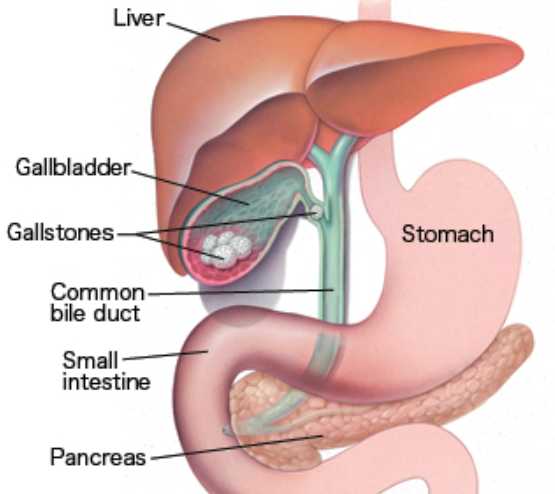Laparoscopic Cholecystectomy is a minimally invasive procedure, requiring general anesthesia, to remove the gallbladder. This surgery uses a laparoscope (an instrument used to see the inside of your body) to remove the gallbladder. It is performed through several small incisions rather than through one large incision, usually 3 incisicons, each one inch or less in length. Patients usually experience faster recovery and less pain than open gallbladder surgery patients. Most patients go home the same day of the surgery and enjoy a quicker return to normal activities.
What is the gallbladder?
The gallbladder is a pear-shaped organ that rests beneath the right side of the liver. Its main purpose is to collect and concentrate a digestive liquid (bile) produced by the liver. Bile is released from the gallbladder after eating, aiding digestion. Bile travels through narrow tubular channels (bile ducts) into the small intestine. Removal of the gallbladder is not associated with any impairment of digestion in most people.
Causes of gallbladder dysfunction:
Gallbladder problems are usually caused by the presence of gallstones which are usually small and hard, consisting primarily of cholesterol and bile salts that form in the gallbladder or in the bile duct. There is no known means to prevent gallstones.
Risk factors:
- Female
- Prior pregnancy
- Over 40 years
- Overweight
- Family History
These stones may block the flow of bile out of the gallbladder, causing it to swell and resulting in sharp abdominal pain, vomiting, indigestion and, occasionally, fever. If the gallstone blocks the common bile duct, jaundice (a yellowing of the skin) can occur. Gallstones do not go away on their own. Some can be temporarily managed by making dietary adjustments, such as reducing fat intake. This treatment has a low, short-term success rate. However, symptoms will eventually continue unless the gallbladder is removed. Treatments to break up or dissolve gallstones are largely unsuccessful. Surgical removal of the gallbladder is the time honored and safest treatment of gallbladder disease.

